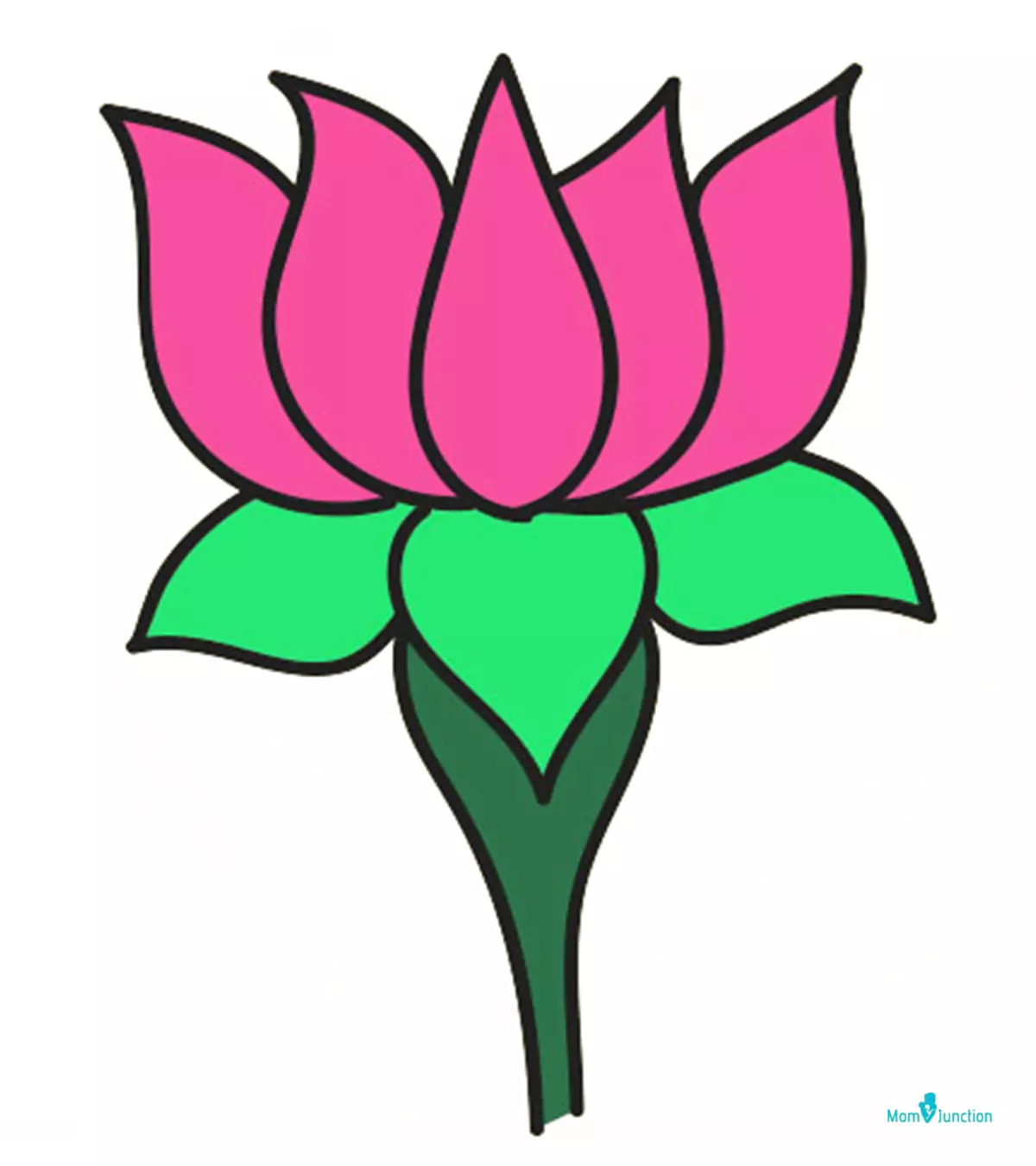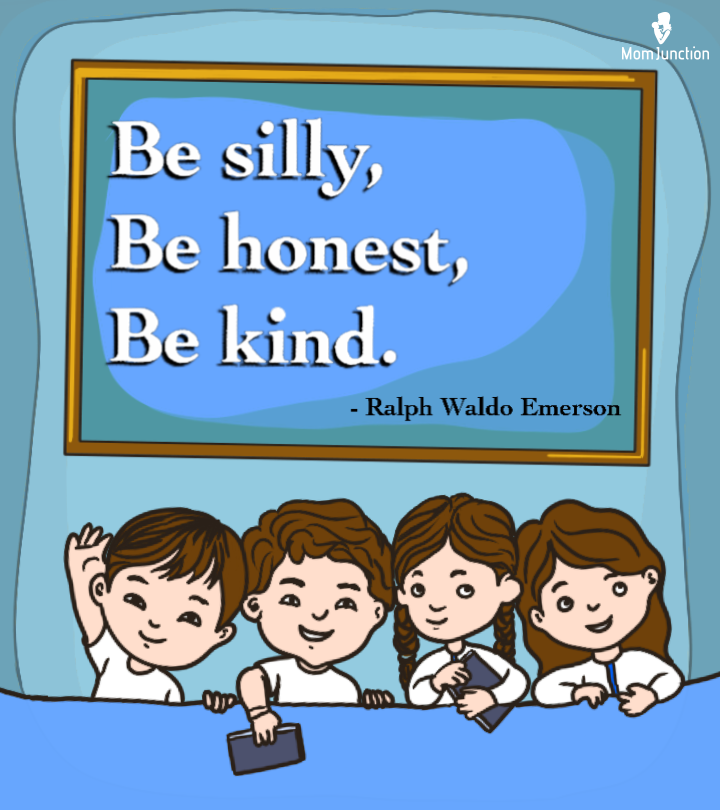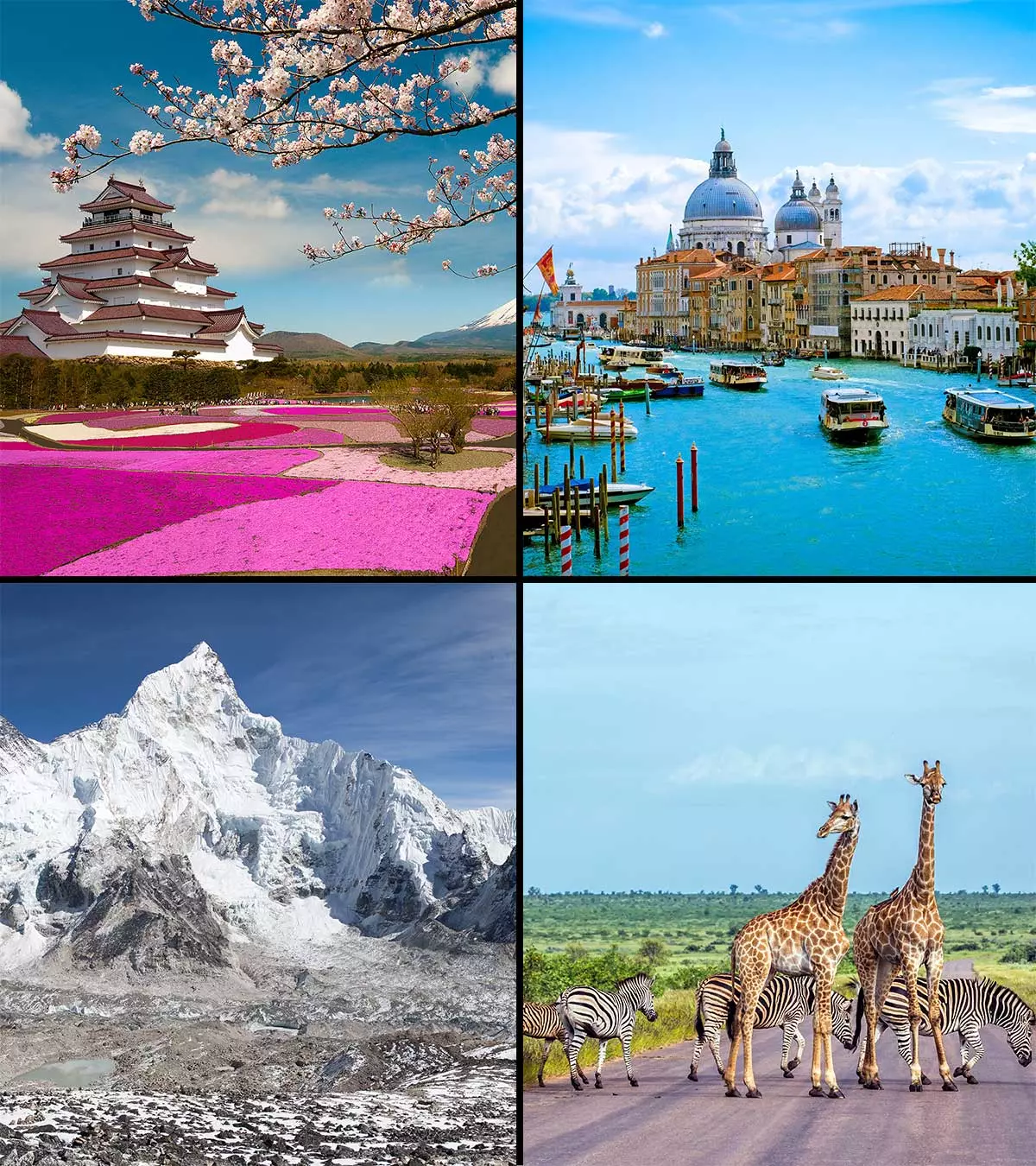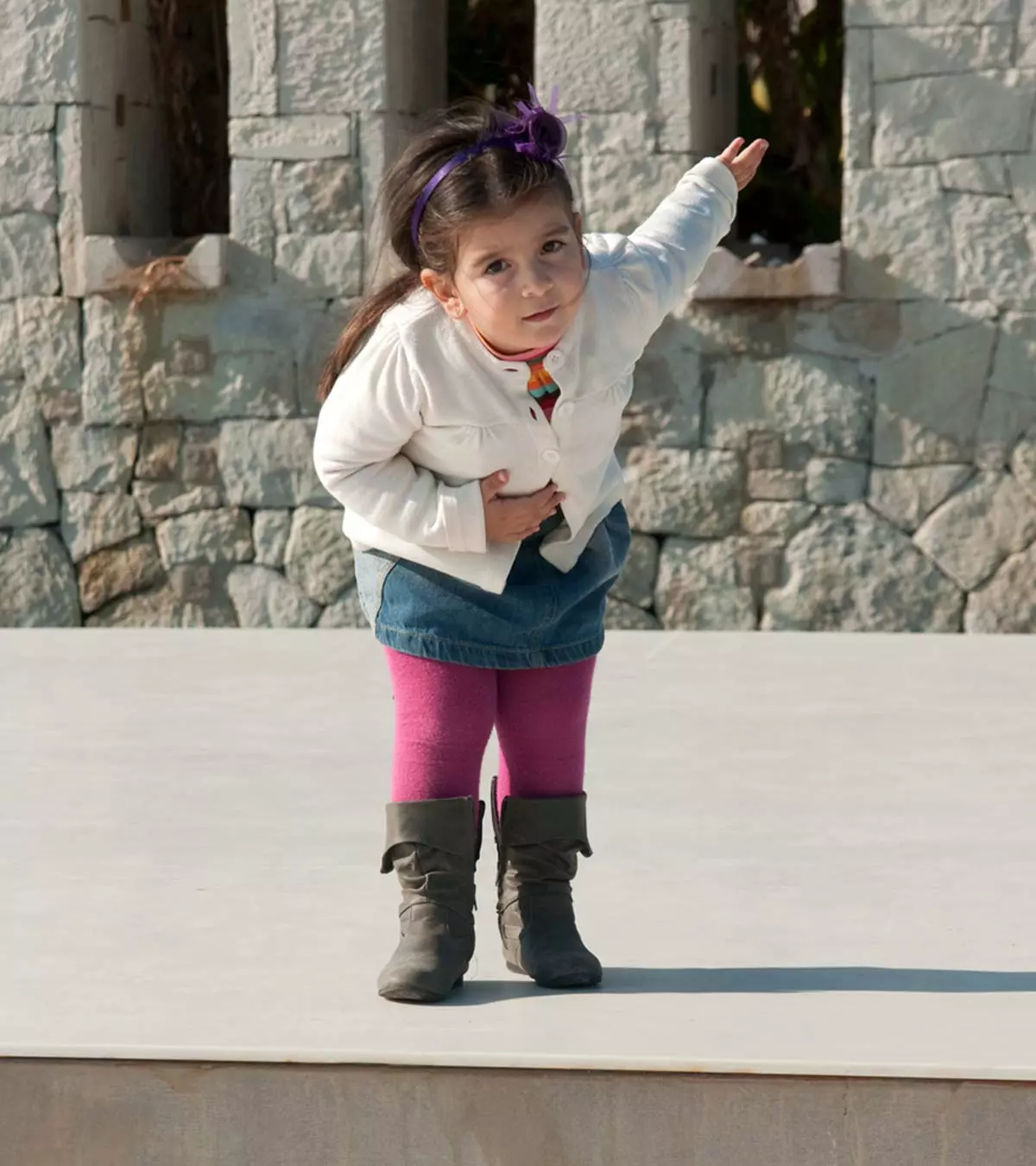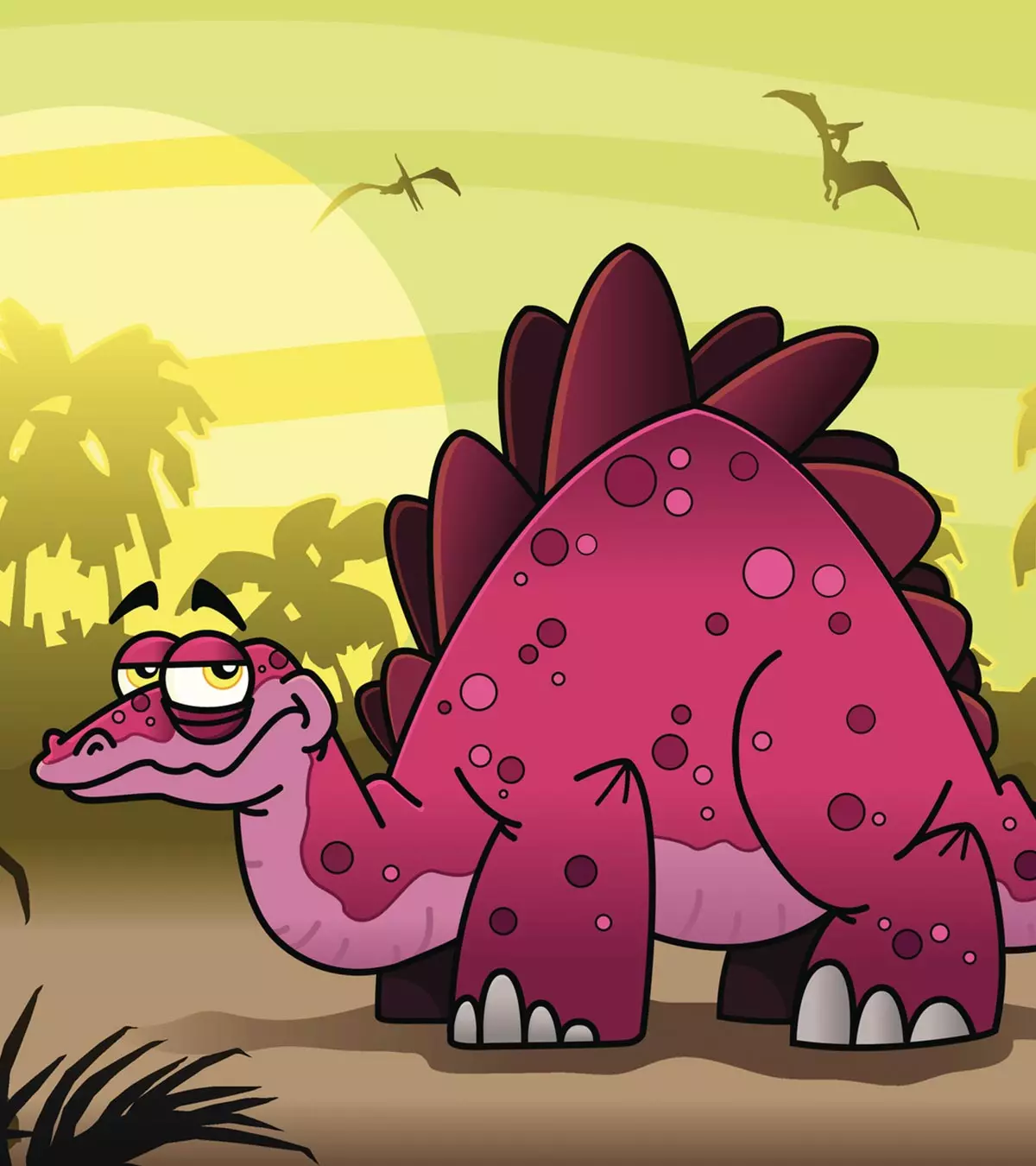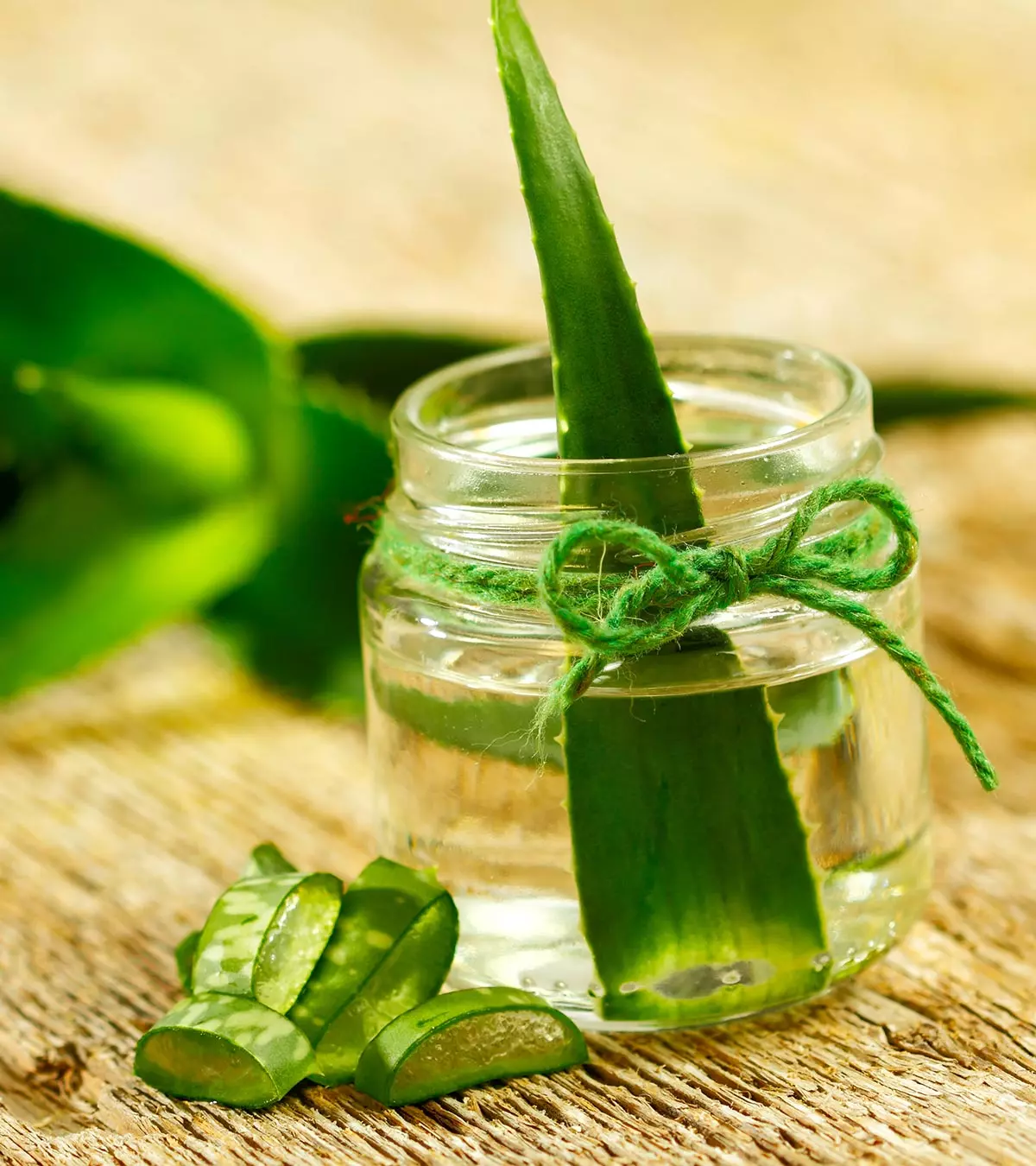
Image: ShutterStock
We are not new to the benefits of aloe vera. It is a fact that aloe vera is a magic potion for adults. But, the benefits of aloe vera for kids are also incredible. It has several medicinal properties and is regarded as the most popular Ayurvedic medicineiAn ancient Indian medicine aimed at internal healing and addressing an ailment at the grassroots level . The following post lists several interesting facts about aloe vera for kids’ understanding. You and your child will find the facts both interesting and fascinating.

Key Pointers
- Aloe vera is composed of 96% water and has various medicinal properties, including treating diabetes, asthma, osteoarthritis, and epilepsy.
- Aloe Vera juice acts as a laxative, aiding in the treatment of constipation.
- Aloe Vera is crucial for maintaining skin health due to its antimicrobial properties, which fight against bacterial and viral infections.
- The cosmetic industry utilizes Aloe Vera in the production of shampoos, soaps, lotions, and other beauty products.
- Aloe Vera is renowned for its longevity and can survive for over 100 years in the wild.
What Is Aloe Vera?
Aloe Vera is a succulent plant that is native to the Mediterranean region. Aloe Vera flourishes in hot and dry climates and grows well in well-drained soil (11). Usually, the plant grows in arid regions. It does not have a stem and possesses fleshy, green, thick leaves. The plant is about 24 to 39 inches in height. Aloe vera is a popular ingredient in Ayurvedic medicines for kids and adults alike and has several medicinal applications. It has anti-inflammatory chemical compounds called anthraquinone, which reduces swelling and alleviates pain (12). Cosmetics and pharmaceutical industries use the plant to prepare many cosmetic and medicinal products.
Aloe vera is also used in juice form and is considered one of the healthiest juices for kids.
According to the market analysis report, consumer preference for healthy beverages has increased across demographics. Plant-based drinks now have more market opportunities and are considered healthy drinks for kids. As a result, the global market for aloe vera drinks was estimated at USD 131.67 million in 2025 and is projected to expand at a compound annual growth rate (CAGR) of 11.7% from 2025 to 2030 (9).
12 Interesting Facts And Information About Aloe Vera For Kids
Here are some interesting facts and benefits of Aloe Vera for kids.
Fact 1
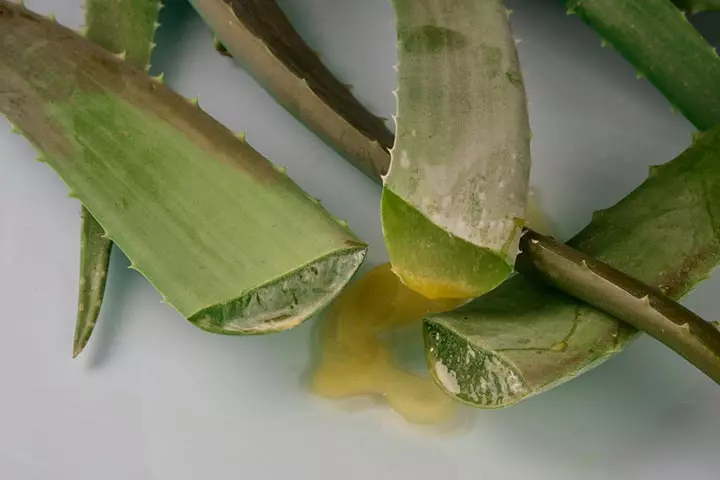
Aloe produces two different substances, namely gel and latex. Latex is yellow in color, and you can find it under the plant’s skin. Aloe Vera gel is a clear matter that resembles jelly, and you can find it on the leaves. Latex is known for its laxative effects, while Aloe Vera gel is popular for its soothing and healing properties, especially for treating burns and cuts (10).
 Point to consider
Point to considerFact 2
You can find about 240 varieties of the plant throughout Europe, Asia, America, and Africa, but today people cultivate only four of the species for health benefits. The species of the plant whose cultivation happens the most is the popular Aloe Vera Barbadensis. It’s native to North Africa (1).
Fact 3
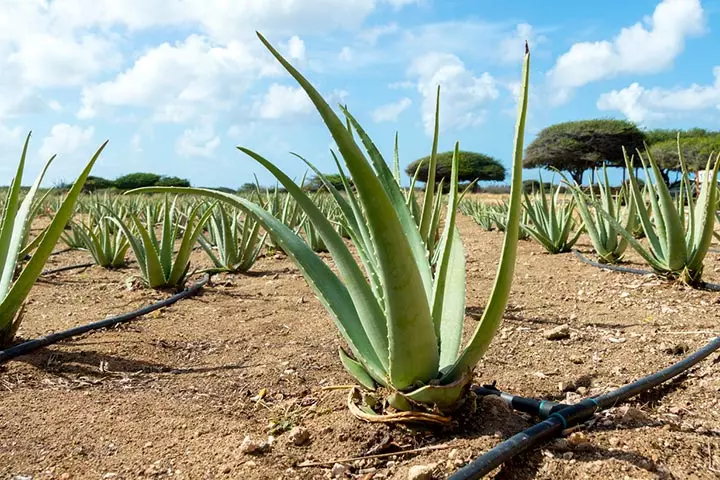
Aloe vera’s raw pulp is composed of roughly 98.5% water, while its mucilage or gel contains about 99.5% water (14).
Fact 4
Aloe Vera is an excellent source of saponinsiToxic chemicals found in leguminous plants that protect them from fungal, bacterial, and insect infections. , useful compounds that possess antimicrobial and antibacterial properties that help treat several bacterial, fungal, and viral infections effectively (2).
Fact 5
Aloe Vera gel that you extract from the leaves possesses about 75 different vitamins, amino acids, minerals, and enzymes that are highly beneficial for your health (2). Aloe vera gel is also an antioxidant source. It contains antioxidants like polyphenols, indoles, and alkaloids.
Fact 6
Aloe Vera gel helps treat diabetes, epilepsyiA neurological condition that makes one more susceptible to recurrent seizures , asthma, and osteoarthritisiA type of non-curable arthritis identified by degenerated cartilage in the joints causing pain, swelling, and stiffness significantly. Also, the topical application of Aloe Vera gel helps treat dry skin, psoriasisiAn autoimmune disorder that makes the skin itchy and scaly , allergies, sunburn, and dry skin substantially (1).
Fact 7
Aloe Vera juice is a popular folk remedy as a laxative that prevents or treats constipation (10). The juice also aids in internal healing, cleansing, and repair when you ingest it appropriately. Make sure you avoid consuming an excess of juice or aloe vera drink as it might prove dangerous to your health (1). Also, it acts as a good moisturizer.
Fact 8
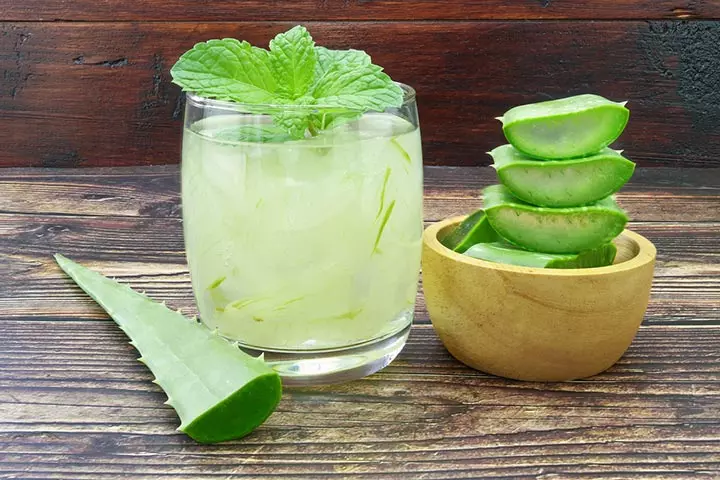
Aloe Vera is popular in the food industry for its use in the production of nutritious yogurts and several beverages.
Fact 9
Aloe Vera also has several applications in the cosmetic industry for the manufacture of shampoos, soaps, lotions, and other cosmetic products.
 Did you know?
Did you know?Fact 10
In ancient Egypt, Aloe Vera was popular as a plant of immortality, and Egyptians also used it as a part of their burial rituals. Cleopatra included the plant in her beauty regimen and used the plant on her body and face.
Fact 11
Aloe vera is popular for its long life expectancy, as it can survive for more than 100 years in a wild environment (15).
Fact 12
Aloe Vera was popular among the Native Americans as ‘The Wand of Heaven’ as they used the plant for several benefits (3).
Frequently Asked Questions
1. Is aloe vera safe for children?
Although there is no sufficient data regarding the safety of ingesting aloe in children, infants (under 12 months of age) shouldn’t consume whole-leaf or aloe preparations orally (4).
2. What are the dangers of aloe vera?
When taken orally in an age-inappropriate manner or more than advisable, aloe may cause gastrointestinal troubles, such as abdominal pain and vomiting (5).
3. Can aloe vera be used to treat burns?
Yes, aloe vera can be utilized for treating different burns. Research has demonstrated that it can assist in decreasing the time it takes for burn wounds to heal by about 9 days when compared to traditional treatments. However, further investigation is required to ascertain the precise impact of aloe vera on burn healing (7).
Katie and Silvia are mothers who run a blog together. In it, one of them shares the memories of how her grandmother used aloe vera during her childhood. She writes, “I remember heading over to my grandmother’s house when I was a kid and the first thing I encountered upon walking through her door was this giant aloe plant (…) She would cut open a leaf and spread its gelatinous contents over whatever came in her path…and many times, that was me or one of my many cousins. Cut knee? Aloe smear. Burned arm from touching the stove when told not to 5,000 times? Aloe smear. Stomach ache? Eat a snack with aloe mixed in with it. Taking a bath? Smear aloe all over your hair and let it sit for 10 minutes. Feeling OK? Eat some aloe anyway (i).”
4. What are the nutritional benefits of consuming aloe vera?
Aloe vera has been claimed to have various health benefits, but scientific evidence is limited. Some studies suggest that it may have a laxative effect, help manage diabetes by reducing blood sugar and improving lipid profile, show potential in the treatment of certain cancers, and have a possible positive effect on ulcers and inflammation in the gastrointestinal tract. However, more research is needed to confirm these findings (7).
5. Are there any potential side effects or allergies associated with aloe vera?
Aloe vera can have side effects. When applied to the skin, it may cause redness and irritation, and in rare cases, it can cause a rash. When taken orally, it may cause stomach cramps, diarrhea, and low potassium levels. People with allergies to plants in the lily family should avoid it. Pregnant women and breastfeeding mothers should also be cautious. Aloe vera can interact with certain medications. More research is needed to understand its effectiveness for different conditions (2).
6. Can aloe vera help with digestive issues in kids?
Aloe vera might help children with digestive issues, such as constipation and gastrointestinal inflammation. Some studies suggest it can improve bowel movement, and possibly provide benefits for ulcerative colitis, but more research is needed to confirm these effects (7).
7. What are some traditional uses of aloe vera in different cultures?
Aloe vera has been used for centuries in various cultures for its healing properties. It was used by ancient Egyptian queens for beauty purposes, by Alexander the Great and Christopher Columbus to treat wounds, and later as a laxative and to treat radiation dermatitis (2 ).
8. How does aloe vera help moisturize the skin?
Aloe vera aids in skin moisturization by promoting skin healing and reducing swelling. It has proven helpful in treating different skin issues, such as psoriasis. Nonetheless, its effectiveness can differ based on the particular condition and the product used (7).
9. Can I use aloe vera to treat acne in kids?
There is evidence suggesting that aloe vera gel may have beneficial properties for treating acne in children. However, additional research is required to verify its effectiveness. Aloe vera gel is frequently utilized in traditional and cosmetic medicine for various purposes and is renowned for its ability to reduce inflammation (8).
Aloe Vera gel has several vitamins, minerals, and enzymes that can cure skin conditions like cuts and burns when applied topically. Studies show that it can also improve chronic disorders if ingested. It is a significant ingredient of various cosmetic products and has beneficial effects on constipation besides acting as a natural detoxifier. Aloe Vera plants may survive more than 100 years and are rightly referred to as the plant of immortality by the Egyptians. These facts about aloe vera for kids will surely quench their curiosity about this exotic plant and expand their knowledge.
Infographic: Interesting Facts About Aloe Vera For Children
Aloe vera is known as the ‘miracle plant’ because of its many uses and benefits. In addition to being used topically on the skin, aloe vera can be taken orally as supplements or juice. It is believed to have several health benefits when consumed internally, including improving digestion and boosting the immune system. Check out this infographic to learn fun facts about aloe vera for children. Illustration: Momjunction Design Team
Illustration: Interesting Facts About Aloe Vera For Kids
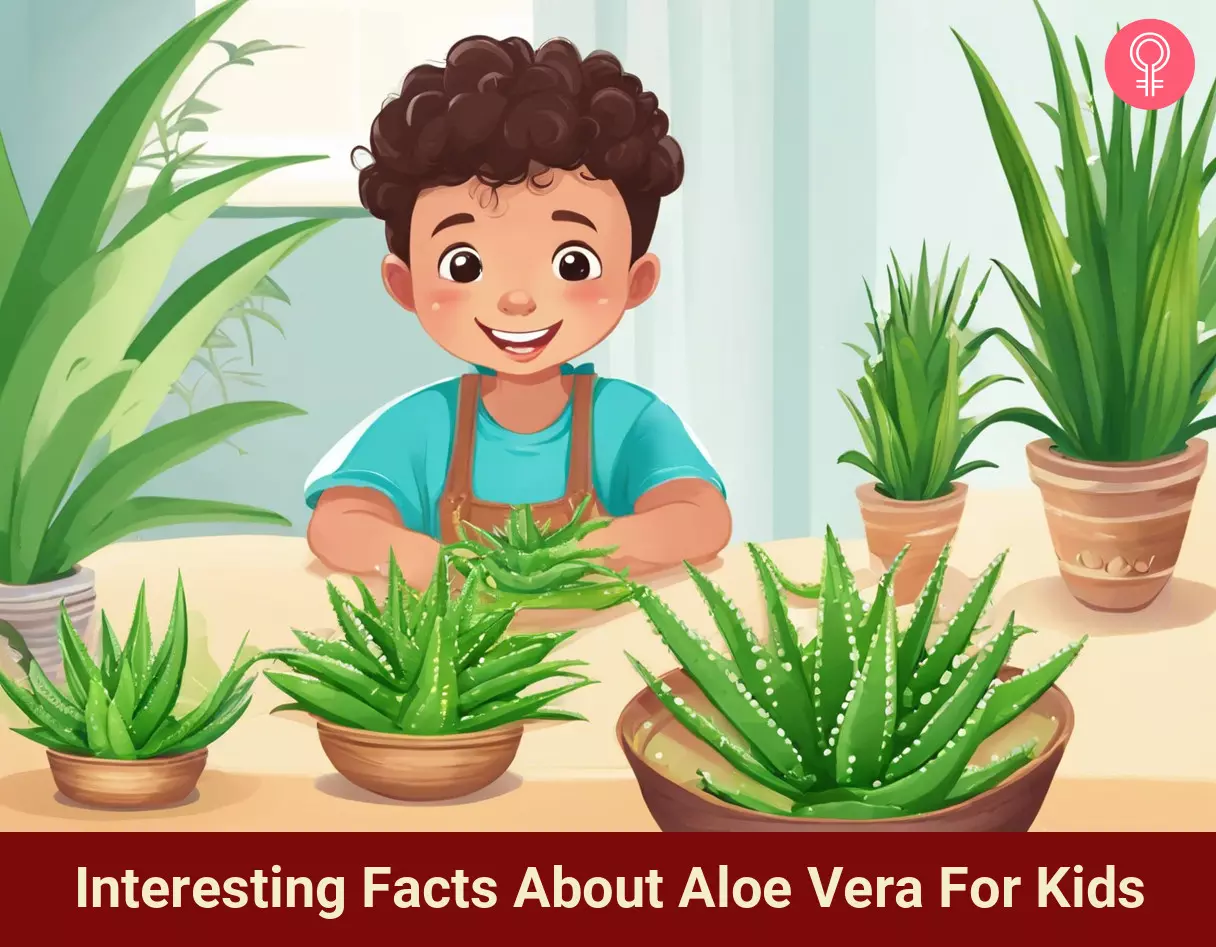
Image: Stable Diffusion/MomJunction Design Team
Embark on a captivating journey to explore the wondrous attributes of Aloe Vera and master backyard planting techniques. Prepare for an enjoyable and enlightening adventure that promises both fun and valuable insights.
Personal Experience: Source
MomJunction articles include first-hand experiences to provide you with better insights through real-life narratives. Here are the sources of personal accounts referenced in this article.
i. Ahhh for aloe – nature’s healing secret (inside and out).https://mysuperfoods.wordpress.com/2013/04/29/ahhh-for-aloe-natures-healing-secret-inside-and-out/
References
- Aloe Vera.
https://www.nccih.nih.gov/health/aloe-vera - Amar Surjushe et al.; (2008); ALOE VERA: A SHORT REVIEW.
https://www.ncbi.nlm.nih.gov/pmc/articles/PMC2763764/ - Vinay K. Gupta and Seema Malhotra; (2012); Pharmacological attribute of Aloe vera: Revalidation through experimental and clinical studies.
https://www.ncbi.nlm.nih.gov/pmc/articles/PMC3611630/ - Aloe
https://www.mountsinai.org/health-library/herb/aloe - Aloe Vera
https://www.mskcc.org/cancer-care/integrative-medicine/herbs/aloe-vera - Davood Hekmatpou et al.; (2019); The Effect of Aloe Vera Clinical Trials on Prevention and Healing of Skin Wound: A Systematic Review.
https://pmc.ncbi.nlm.nih.gov/articles/PMC6330525/ - Meika Foster et al.; (2011); Evaluation of the Nutritional and Metabolic Effects of Aloe vera – Herbal Medicine.
https://www.ncbi.nlm.nih.gov/books/NBK92765/ - Neha Gupta et al.; (2010); Aloe-Vera: A Nature’s Gift to Children.
https://www.ncbi.nlm.nih.gov/pmc/articles/PMC4968173/ - Aloe Vera Drinks Market Size, Share & Trends Analysis Report By Product (Flavored, Unflavored), By Distribution Channel (Hypermarket & Supermarket, Drug Stores, Online), By Region, And Segment Forecasts, 2025 – 2030.
https://www.grandviewresearch.com/industry-analysis/aloe-vera-drinks-market - Chapter 3 Evaluation of the Nutritional and Metabolic Effects of Aloe vera.
https://www.ncbi.nlm.nih.gov/books/NBK92765/ - Aloe Vera: Habitat, Toxin Removal, and Ecological Importance.
https://ecoservantsproject.org/aloe-vera-habitat-toxin-removal-and-ecological-importance/ - Aloe Vera: Not Just for Sunburns.
https://www.pennmedicine.org/updates/blogs/health-and-wellness/2019/august/aloe - Shatrughna U. Nagrik et al; (2025); Role of aloe vera in skincare: exploring its therapeutic benefits, formulations, and future innovations
https://www.researchgate.net/publication/387072320_Role_of_aloe_vera_in_skincare_exploring_its_therapeutic_benefits_formulations_and_future_innovations - Josias H Hamman; (2008); Composition and Applications of Aloe vera Leaf Gel.
https://pmc.ncbi.nlm.nih.gov/articles/PMC6245421/ - Aloe Asphodelaceae Family.
https://animals.sandiegozoo.org/plants/aloe
Community Experiences
Join the conversation and become a part of our nurturing community! Share your stories, experiences, and insights to connect with fellow parents.
Read full bio of Elisa Yi
Read full bio of Debolina Raja
Read full bio of Harshita Makvana
Read full bio of Kavita Kankani









